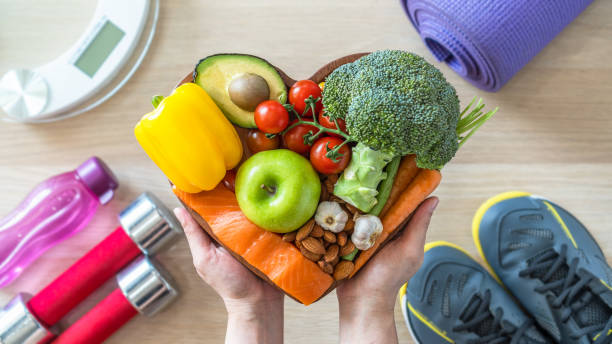Cultivating a Culture of Body Positivity: A Comprehensive Guide
Body image concerns are pervasive in today's society, significantly impacting the well-being of many, especially young people. The pressure to conform to unrealistic beauty standards often leads to negative self-perception and a strained relationship with one's body. This comprehensive guide offers practical strategies to foster a supportive environment that promotes positive body image and celebrates the inherent beauty in diversity.
1. Educate Yourself and Others: Begin by gaining a deeper understanding of the complex factors influencing body image, including the pervasive impact of media representations and societal norms. This knowledge empowers you to offer informed support and engage in meaningful conversations with those struggling with body image issues. Share this knowledge with others, encouraging critical thinking about the messages they encounter daily.
2. Challenge Unrealistic Beauty Standards: Actively challenge and dismantle unrealistic beauty standards perpetuated by media and society. Promote the understanding that beauty is diverse and comes in all shapes, sizes, and ethnicities. Encourage others to question these standards and embrace their individuality.
3. Promote Unconditional Self-Acceptance: Emphasize the importance of self-acceptance and celebrate individual uniqueness. Remind others that differences are what make us beautiful and that true beauty lies in self-love and confidence. Encourage focusing on inner qualities rather than solely on physical appearance.
4. Prioritize Health over Appearance: Shift the focus from appearance to overall health and well-being. Encourage activities that promote both physical and mental health, such as exercise, mindfulness, and healthy eating habits. Frame these activities as self-care rather than methods for achieving a specific body type.
5. Offer Meaningful Compliments: When offering compliments, move beyond physical appearance. Acknowledge achievements, skills, talents, and personality traits, highlighting the individual's intrinsic value and worth. This reinforces self-esteem and fosters a positive self-image independent of physical attributes.
6. Encourage Self-Care Practices: Promote self-care activities that nurture emotional and physical well-being. This can encompass exercise, mindfulness, hobbies, spending time in nature, or engaging in activities that bring joy and relaxation. Help others identify and prioritize activities that foster self-compassion.
7. Eliminate Body-Shaming Language: Be mindful of the language used, as words significantly impact self-perception. Actively avoid body-shaming language and encourage others to do the same. Create an environment where open and honest communication about body image is welcomed without judgment.
8. Celebrate Diversity and Inclusivity: Embrace and celebrate the beauty of diversity in all its forms, including body types, ethnicities, abilities, and backgrounds. Promote acceptance and respect for all individuals, fostering an inclusive environment where everyone feels valued and respected.
9. Lead by Example: Demonstrate self-acceptance and self-love through your own actions. Share your personal experiences and struggles with body image (if comfortable) to create a sense of connection and empathy. Show others that it is okay to embrace imperfections and celebrate one's individuality.
10. Create a Safe and Supportive Space: Foster an environment where open and honest conversations about body image are encouraged without fear of judgment or criticism. This safe space allows individuals to express their feelings and concerns without feeling vulnerable or ashamed.
11. Promote Positive Self-Talk: Encourage individuals to replace negative self-talk with positive affirmations. Guide them in identifying and challenging negative thoughts, replacing them with messages of self-compassion and self-acceptance. This helps build self-esteem and foster a healthier relationship with oneself.
12. Develop Media Literacy Skills: Encourage critical thinking when consuming media. Help individuals identify unrealistic beauty standards and understand that media representations often do not reflect reality. This empowers them to navigate media messages with discernment and resilience.
13. Support Body-Positive Initiatives: Actively participate in and support body-positive initiatives and organizations within your community. This demonstrates commitment to creating a more inclusive and accepting society and helps raise awareness about the importance of positive body image.
14. Facilitate Open and Honest Dialogue: Create opportunities for open and honest conversations about body image. Normalize these conversations and help break down the stigma surrounding body image concerns. Open dialogue fosters understanding, empathy, and a shared commitment to positive change.
15. Seek Professional Help When Needed: Recognize that some individuals may require professional support to address persistent body image struggles. Encourage seeking help from qualified therapists or counselors when necessary. Professional guidance can provide valuable tools and strategies for overcoming challenges and building a healthier relationship with one's body.
In conclusion, building a supportive environment for positive body image is a collective effort requiring education, empathy, and a commitment to promoting self-acceptance and inclusivity. By implementing these strategies, we can empower individuals to develop a healthy relationship with their bodies and embrace their unique and beautiful selves. Let's work together to create a world where everyone feels accepted, loved, and celebrated, regardless of their appearance.





